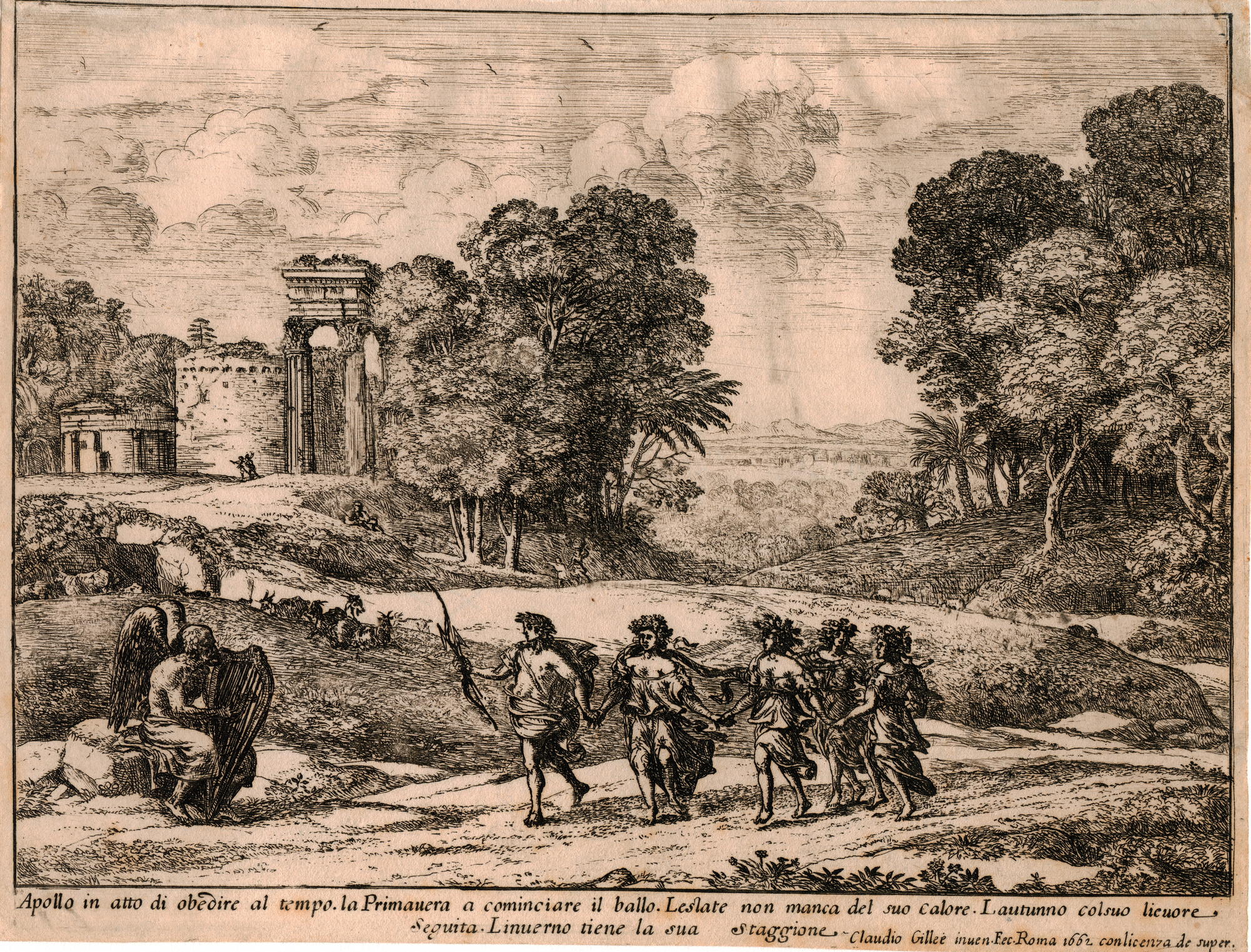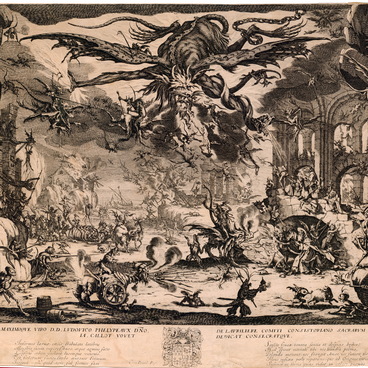The French painter and draftsman Claude Lorrain (real last name — Gellee) etched very rarely. The earliest of his etchings date back to 1630. It is known that 44 sheets were made by Lorrain prior to 1642, and additional five — between the years 1650 and 1660.
Time, Apollo and Seasons
Время создания
around the year 1662
Размер
19,7x26,1 cm
19,7x26,1 cm, carved by press
19,7x26,1 cm, carved by press
Техника
etching, seventh condition out of seven; imprint of early XIX century
Коллекция
1
Открыть в приложении#3
Claude Gellee
Time, Apollo and Seasons
#5
#2
On the engraving of 1662 ‘Time, Apollo and seasons’ is an idyllic, literally speaking, pastoral storyline: Zeus indignant at the fact that Apollo killed his armorers Cyclops, sent him out to keep a close eye on herds of Tsar Admetus. The characters are depicted against the background of the remains of ancient Rome precisely during his service. Apollo equipped with a bow, wearing wreath, walks along a pathway passing by the cows of Admetus. Following him, holding hands, walk the seasons. Spring was often depicted as a young girl holding flowers, Summer — with a sickle and ears in a wreath, Autumn — with a grapevine or wine, Winter — warmly dressed against frost. These characters — seasons — add pastoral dimension to the storyline.
On their way they meet and get under the power of Сronus playing on the harp — a deity which gave rise to Time, Fire, Water and Air.
On their way they meet and get under the power of Сronus playing on the harp — a deity which gave rise to Time, Fire, Water and Air.
#7
In the middle of the XVII century engravers often used a combined technique. In etching a copper plate was сoated with a layer of special varnish, smoked; a figure was carved on the blackened varnish and etched with a mixture of acids. Such technique produced a flexible gradation of light and shadow, soft gradients and mild lines. Later the lines were scratched with a dry needle on the plate itself: thus a distinct image, proper contours and touches of different wideness with sharp edges appeared.
Lorrain thoroughly mastered the etching technique, thus practically didn’t help himself with a chisel or dry needle — his images turned out to be smooth and contrasting and mid-tones — matured. Meanwhile, while working with a dry needle, Lorrain led his touch in a free manner: the lines resembling loops and hooks were suitable for images of leafs, plants, soil and other similar details. Many etchings by Lorrain are compositionally built and completed as his picturesque landscapes.
The style of landscape by Claude Gellee is called heroic. It is characterized by a wide line of landscape, a lot of air and antic ruins with Renaissance structures by which he liked to frame pictures and engravings. Lorrain preferred to use a direct sunlight, without resorting to scattering. The sky is often depicted by Lorrain as open, with no storm clouds; trees, ground and grasses are flooded with sunlight. He skillfully conveyed fogs, movement of waters, twilights etc.
Lorrain thoroughly mastered the etching technique, thus practically didn’t help himself with a chisel or dry needle — his images turned out to be smooth and contrasting and mid-tones — matured. Meanwhile, while working with a dry needle, Lorrain led his touch in a free manner: the lines resembling loops and hooks were suitable for images of leafs, plants, soil and other similar details. Many etchings by Lorrain are compositionally built and completed as his picturesque landscapes.
The style of landscape by Claude Gellee is called heroic. It is characterized by a wide line of landscape, a lot of air and antic ruins with Renaissance structures by which he liked to frame pictures and engravings. Lorrain preferred to use a direct sunlight, without resorting to scattering. The sky is often depicted by Lorrain as open, with no storm clouds; trees, ground and grasses are flooded with sunlight. He skillfully conveyed fogs, movement of waters, twilights etc.
#8
Irbit State Museum of Fine Arts
читать дальшескрыть
00:00
00:00
1x
Time, Apollo and Seasons
Время создания
around the year 1662
Размер
19,7x26,1 cm
19,7x26,1 cm, carved by press
19,7x26,1 cm, carved by press
Техника
etching, seventh condition out of seven; imprint of early XIX century
Коллекция
1
Открыть в приложении
Поделиться




